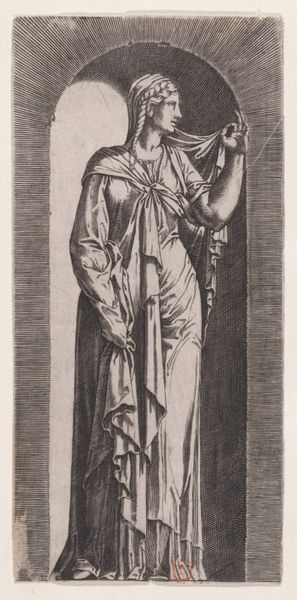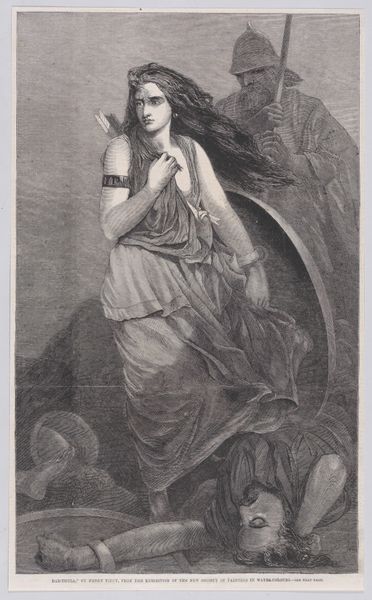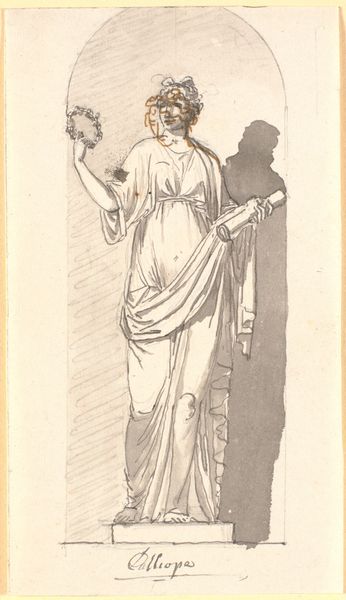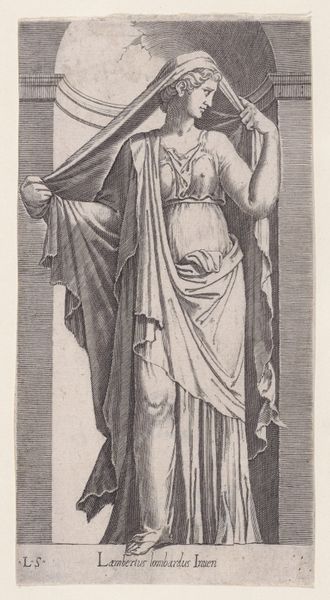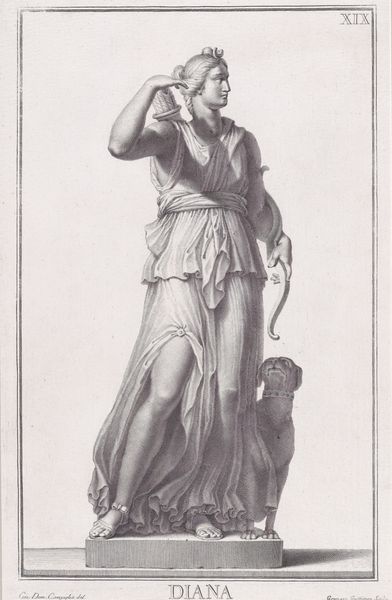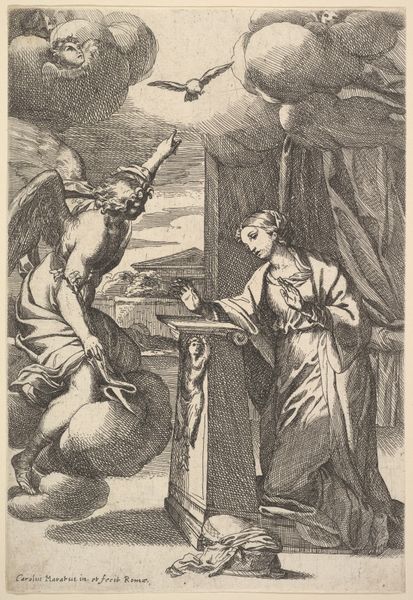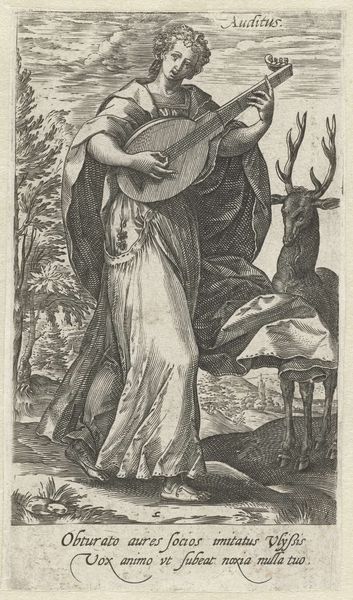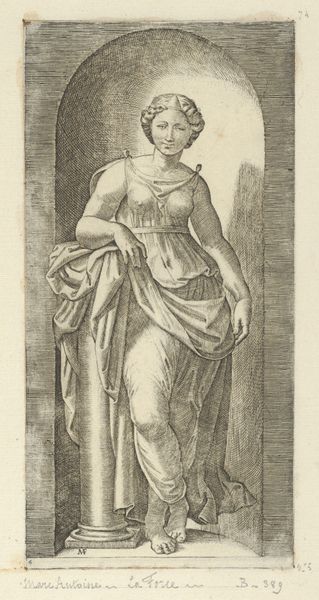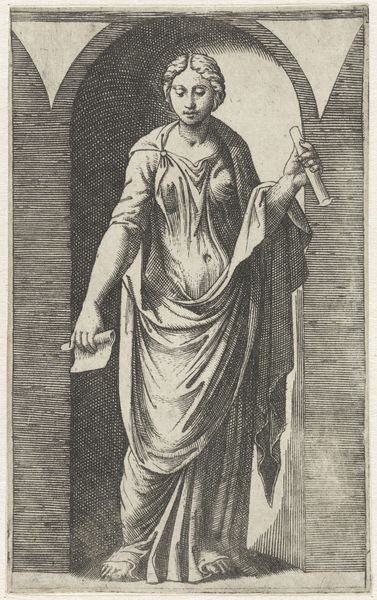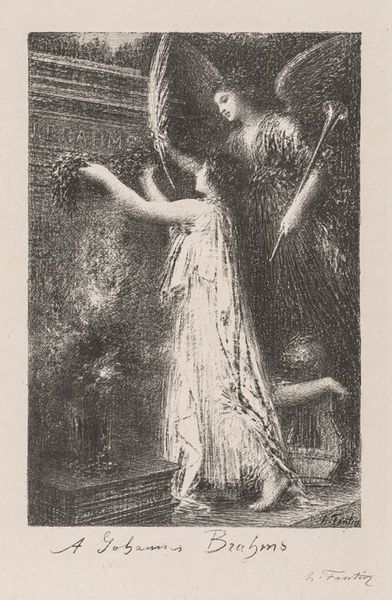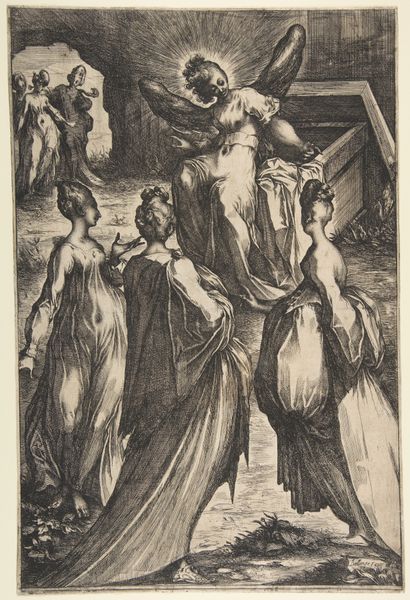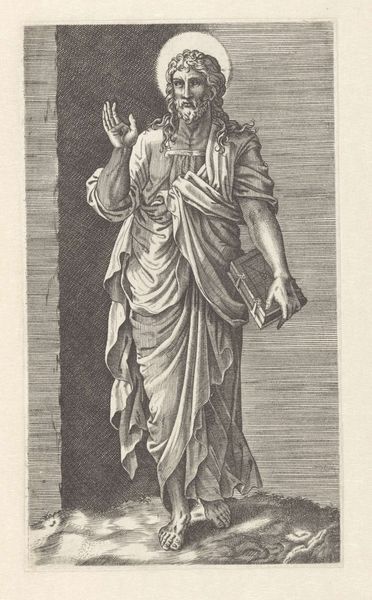
drawing, print, woodcut
#
drawing
#
allegory
# print
#
woodcut
#
symbolism
#
nude
Dimensions: Image: 6 7/8 × 4 7/16 in. (17.5 × 11.2 cm) Sheet: 9 13/16 × 7 7/8 in. (24.9 × 20 cm)
Copyright: Public Domain
Frederick Sandys created this wood engraving, Danaë in the Brazen Chamber, using a painstaking process. A design is first transferred onto a block of wood, then a craftsman uses specialized tools to carve away the areas that will not be inked. It's a subtractive process requiring a high degree of skill, as the remaining raised areas will define the image. Look closely, and you'll notice how the fine lines and intricate details create dramatic contrasts between light and shadow. Sandys has used these graphic qualities to great effect, defining the texture of Danaë's flowing hair, the folds of her gown, and the lush foliage behind her. Wood engraving was commonly used in the 19th century for book illustrations, and other printed matter. The labor-intensive nature of wood engraving meant that artists often relied on skilled artisans to execute their designs. This division of labor raises questions about authorship and the value of craft versus fine art. In this context, the print embodies not only Sandys' artistic vision, but also the collaborative efforts of the many hands involved in its production. By focusing on these aspects, we can move beyond traditional art history, and appreciate the complex social and economic context in which this print was made.
Comments
No comments
Be the first to comment and join the conversation on the ultimate creative platform.
